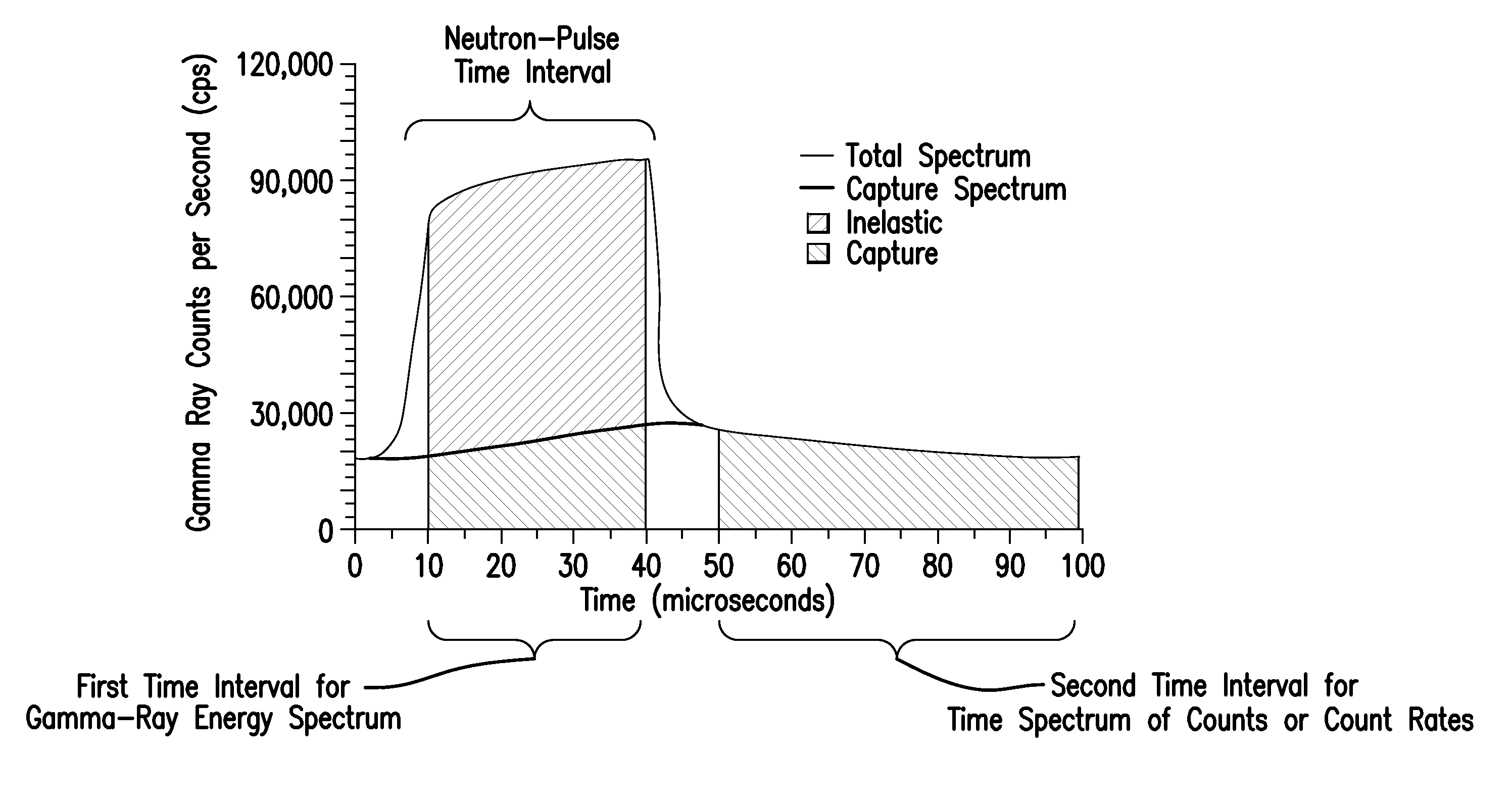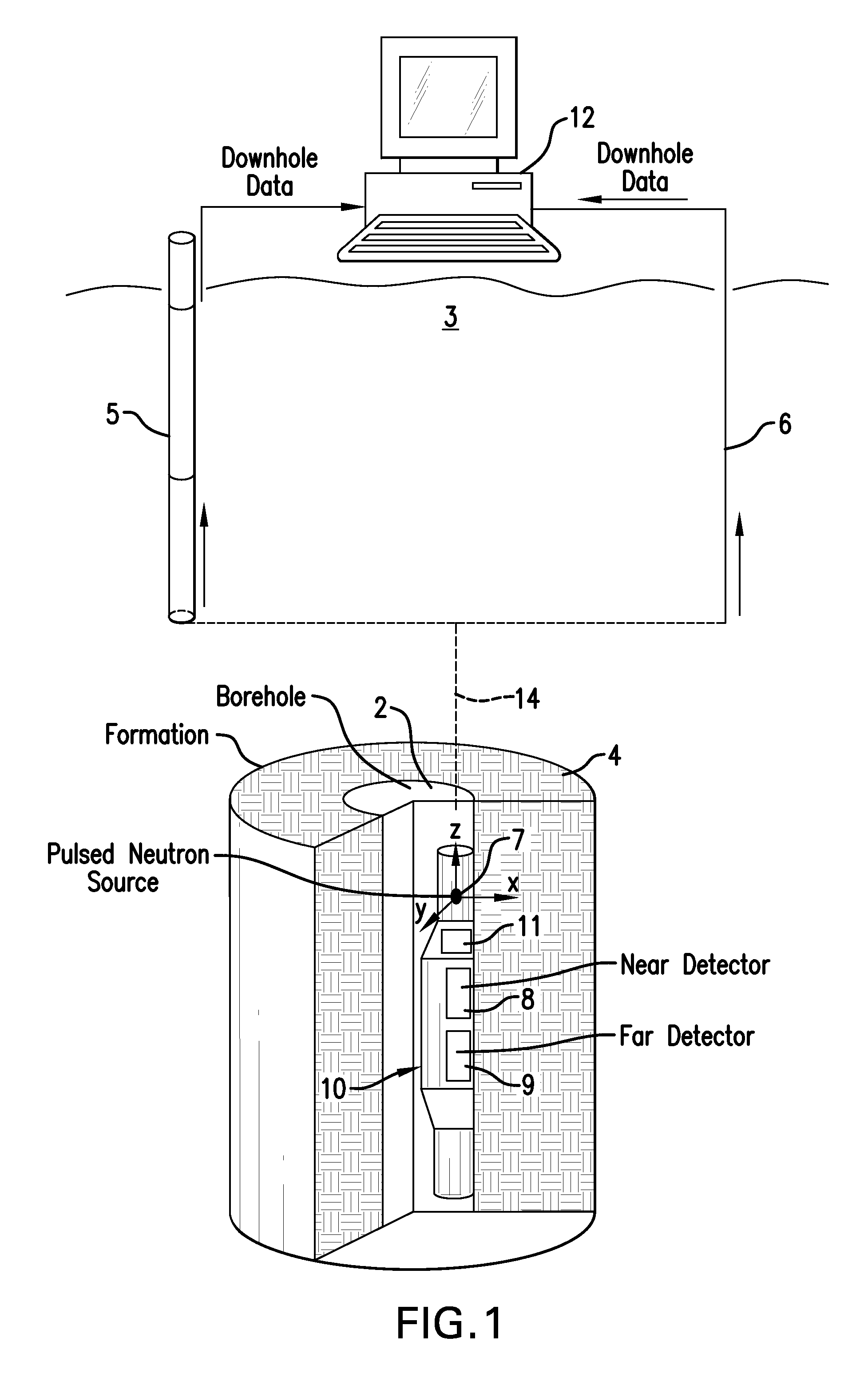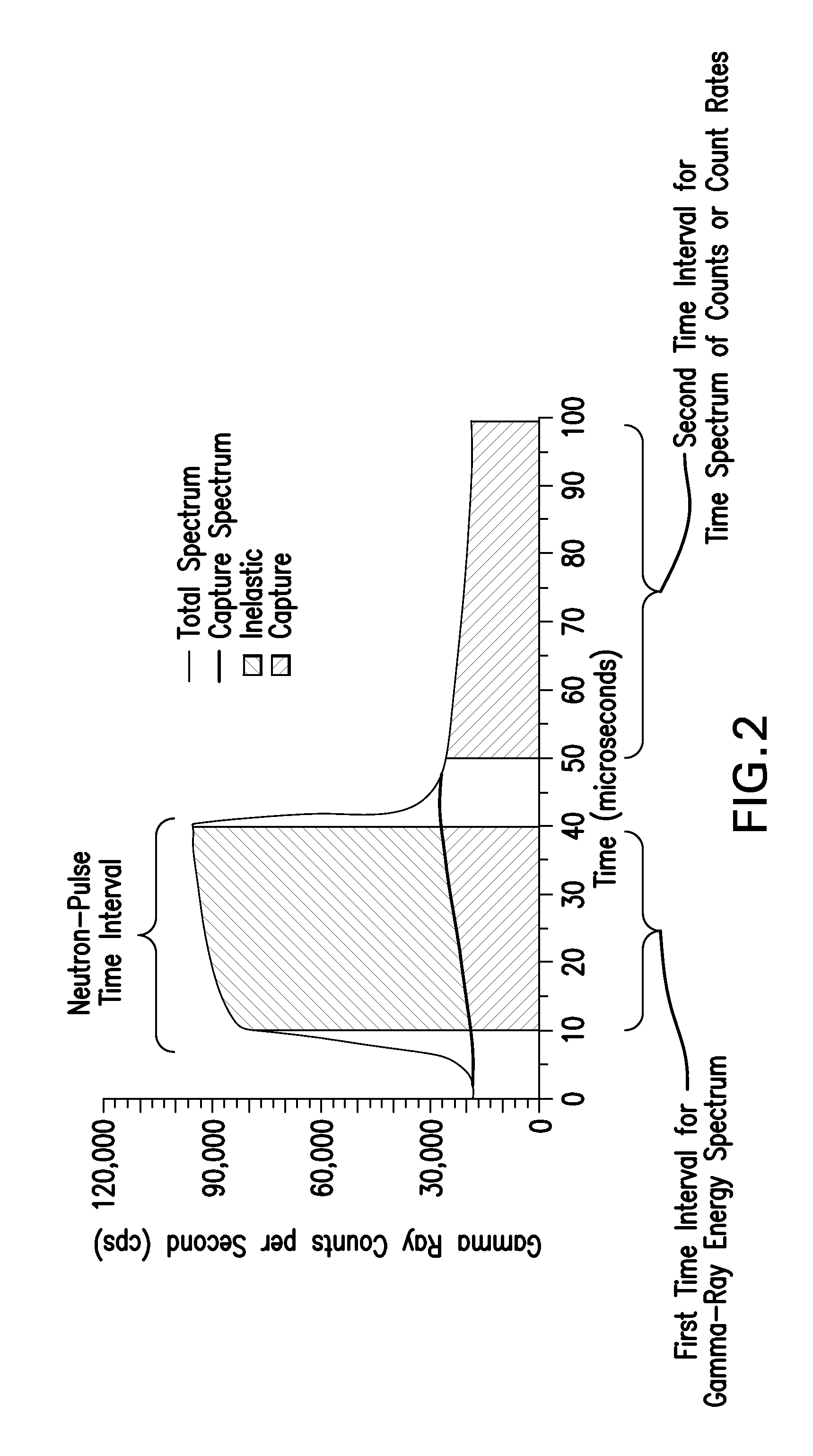Methods for sourceless density downhole measurement using pulsed neutron generator
a sourceless density and neutron generator technology, applied in the direction of instruments, nuclear radiation detection, measurement devices, etc., can solve problems such as types of challenges associated
- Summary
- Abstract
- Description
- Claims
- Application Information
AI Technical Summary
Benefits of technology
Problems solved by technology
Method used
Image
Examples
Embodiment Construction
[0015]A detailed description of one or more embodiments of the disclosed apparatus and method presented herein by way of exemplification and not limitation with reference to the Figures.
[0016]FIG. 1 illustrates an exemplary embodiment of a density logging tool 10 disposed in a borehole 2 penetrating the earth 3, which includes an earth formation 4. The density tool 10 is conveyed through the borehole 2 by a carrier 14. The carrier 14 can be a drill string 5 for logging-while-drilling (LWD) applications or a wireline 6 for wireline logging applications. The density tool 10 includes a pulsed-neutron source 7 configured to emit a controlled pulse of fast neutrons (14 MeV) through the borehole 2 and into the formation 4. In order to detect (i.e., measure) gamma-rays resulting from interactions of the emitted neutrons with formation elements, the density tool 10 includes a first detector 8 (i.e., near detector) spaced a first distance from the neutron source 7 and a second detector 9 (i....
PUM
 Login to View More
Login to View More Abstract
Description
Claims
Application Information
 Login to View More
Login to View More - R&D
- Intellectual Property
- Life Sciences
- Materials
- Tech Scout
- Unparalleled Data Quality
- Higher Quality Content
- 60% Fewer Hallucinations
Browse by: Latest US Patents, China's latest patents, Technical Efficacy Thesaurus, Application Domain, Technology Topic, Popular Technical Reports.
© 2025 PatSnap. All rights reserved.Legal|Privacy policy|Modern Slavery Act Transparency Statement|Sitemap|About US| Contact US: help@patsnap.com



